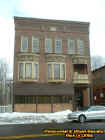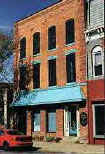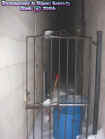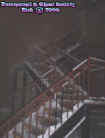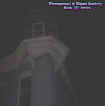|
|
||
|
The historic village of Lancaster NY was erected in 1849 although there is prior history to the area between the land sold by the Holland Land company all the way to Indian artifacts and skeletal remains found before the village was built. There were at lease 3 different Indian tribes in the area one of them was quite peaceful but none the less the Powerful Iroquois nation massacred them all in hopes of spreading there territory. In 1808 the Cayuga Creek Settlement was born which was fairly close to the village. From there in 1811 a Mill and dam was built I believe near where the tunnel was I investigated earlier and that same year a store was also built. Where the municipal building stands today another settler build a long cabin and tavern. So in the early 1800s the settlement had grown such as having pioneers like Benjamin Clark, Pardon Peckham, Elias Bissell, Johnson's, Carpenters, the Fields, the Paines, the Hibbards, Alfred Luce, and Edward Kearney were just a few of the families who lived in this early settlement. Then the ware of 1812 had arrived and 32 men in total served during the war 2 perished while 2 were wounded. Considering this was not a large settlement 32 soldiers at this time really was a high number for such a small settlement. After the war in 1818 the first school house and catholic parish were developed eventually in 1825 a post office. The road leading in from Buffalo in 1827 to the settlement at the time was called Pioneer lane this is when many immigrants arriving in Buffalo traveled to spur a grow in the settlement. In 1832 the first church building that was erected was the First Presbyterian which is one of the oldest churches in the area and still today stands proud and restored. Most of Lancaster was part of the township of Clarence but in 1833 the post office was called Lancaster thus how the town started to develop its own township and name. A small government was starting to develop in the town and many names took office and a election was held whether the village of Lancaster should be voted upon. At the time in 1849 there was 677 settlers living here, 124 families, even the railroad which ran near by the town. When the election took place it was a vote of 61 to 28 and this is how Lancaster was incorporated from that point on the town held elections for president, tax collector and many other small positions just as we have today. In 1851 there was 14 buildings in the village, wood was used to heat the homes and the first RC church was almost complete. The first bank was established also which today is now the real estate office. The Erie Lackawanna railroad which still runs today is how settlers were able to get to Buffalo which was about an 8 mile train trip to the city. Then the civil war arisen and the town of Lancaster remained partisan towards the union as the village favored it in 1946 the town hamlet rejoined with the village. But over 150 men from the Village of Lancaster NY fought in the civil war so this gives you an idea how big a role the village had in our history. Especially since the underground railroad also existed here. In 1866 oil lamps were installed on the brick streets and remained till 1897. I seen an old photo of this and the picture almost looked like the streets of London. In 1866 the town had a population of over 4000 in total and the village had over 1200 living within. So it nearly had grown quite large in a matter of a few decades. In 1874, Lancaster's first fire department, the Rescue Hook and Ladder Company No. I, was born. This fire hall was torn down along with the inn by 1940 to build a bigger and better one along with the municipal building. By 1877 There was now, in the Village of Lancaster, two flouring mills, one carriage factory, the Lancaster glass works, one iron furnace, three breweries, two planning mills, one tannery, one malt house, one bedstead shop, two cabinet shops, three tin shops, two meat markets, one drug store, four general stores, three grocery stores, two tailor shops, one harness shop, three hotels, four blacksmith shops, one basket shop, and numerous saloons. In 1883 a new railroad line was laid near the village of Lancaster and the first train arrived here in here. Also roads were built and much construction took place the 1880s to 1890s were a time for growth and building. But it was also a time of hardships for the village perhaps it was a curse or maybe a strange series of upcoming affects restricting the village from its development. In 1894 the barn off Central Ave caught fire which was in the rear of her Butcher Shop. The wind caught on to her shop eventually engulfing all the buildings on the West side roughly for a half of mile all the way from Broadway to West Main St. Eventually the wind shifted and then fire caught on to 3 buildings on the east side which in turn were consumed to ash. The fire was so horrible that Buffalo Fireman were called into help. The last building to be destroyed was the house and Barn of Dr. Samuel Potter where today Bimbaum Furniture store now stands. The damage was so bad that it was estimated at $100,000. Did people perish in the fire? From what I read and heard yes there were deaths as back in the day many people panicked and often jumped out of windows or were trapped due to the lack of fire hydrants and water mains to control the fires. Then once again tragedy struck in 1896 as a soap factory on Central Caught fire spreading to Maute's hardware store, the Balthasar's hotel and a barn in back of Cushing Block. Just 2 years later another disaster on Central Avenue where the village stands. Other fires occurred to much smaller ones like Soemann's brewery on East Main and Court Street, Cushing's Ice House a mile away, and the Lancaster Machine Knife Works on court street burned down in 1899. So the 1890s were harsh as quick as buildings went up many were burnt down. Again many would perish in the fires. This led to in 1900 hydrants and water mains which were installed to prevent any further tragedies. Along with a sewage plant and system in 1907 which at the time made Lancaster take out the biggest bond for such a project. In 1902 the main building and 2 greenhouses belonging to S.B.Smiling were destroyed. Then in 1909 the American Malleables plant on Central Avenue burnt down causing $200,000 in damage. So even though hydrants were installed the fires that kept occurring could not be prevented as disaster kept striking this village. In 1898 President McKinley congress had declared war on Spain. This was only lasted a few months and men were recruited all of over the country. Lancaster was a very patriotic village that loved there country and 20 men volunteered to fight for there country for 5 months whether any perished I have no idea. Speaking of wars in 1917 there was a draft at the town hall for soldiers to serve in the first world war. About 428 men served from the Lancaster area in the war 26 sacrificed there lives. Most of the soldiers came from Lancaster out of the 1100 men in the area so again Lancaster men were brave and fought for there country. Then we had many years of peace. In 1938 a great flood happened in the village area but rather then talk about that I will save it for another investigation in the proximity of the area. So again Lancaster is hit with more obstacles as many main streets were washed away and destroyed by the dangerous flood waters. Then WWII came to be and once again good men lost there lives from the Village of Lancaster. Along with that another fire struck in 1950 destroying the interior of the memorial building. This building was made to remember the soldiers who fought bravely in war. When it burned down members of the Washington Post #287 raised enough money to restore this place all within the same year. But again see where I am getting at another mysterious fire. Speaking of fires 4 years later the Western Auto Store which once was the same building in the 1800s called the Lancaster Post Office was destroyed this time it spread to other structures near by. Then in 1956 2 years later after this incident another fire at night broke loose which damaged Young's Mill next to the Erie Railroad. The ladder on the fire truck was so badly damaged and stuck inside the roof that a crane had to remove it. After this business seemed to decline. Although many new things were established like legions field, the first swimming pool, the marine bank which sat near the creek and even the flood control project. Now we will talk about more fires that occurred in the village and although there is many other important parts of history the fires I believe have to do with the Hauntings that occur in the area. In 1960 the Grimesville Inn which was used for a hotel for years and a landmark had a fire which was currently used for offices caught fire there were unknown causes accept that it was near the railroad and they said it could be attributed to a grass fire which caught on to the buildings. Then over 60 years later in 1961 a massive fire caught on to Oelkers Furniture Co on the north side of West Main Street. The blaze was so terrible that the fire fighters battled for hours trying to prevent the whole village from burning down. The store was destroyed but the fire was contained. However the Panizca Fruit Mark, Central Machine Co, Cammel's Meat Market, Lancaster Variety Store, and Pepka's supermarket all received some damage from it as well. At this point on Business fell and the D& L plaza which stands today because I shop there exist which hurt the village near by financially. Again insurance agents would not issue money for replacements for the business they stated that the hydrants and water facilities were not enough to contain the fire therefore it was the villages fault. Then in 1965 another fire occurred which destroyed the clubhouse of the Lancaster country club which still stands today and was rebuilt. Then during the same year in the village the Tudor Jones Warehouse and Serbi Brothers Contracting Company burnt down. So the 1960s had its fair share of fires and mishaps. By 1968 downtown Lancaster looked like it was hit by a bomb. Many buildings were crumbling, ashes, and machinery was brought into the village to clear out all the debris. In 100 years Central Ave and the main street area suffered everything from floods to fires including death it was time for a new era. The demolition project was started where the village could be rebuilt which funding for the Urban Renewal project could be started. In 1970 after many new restorations another fire broke out in a cellar it was minor but spread only to destroy a large apartment building. This site later become the area of the Lancaster Library. Then 2 months later in May of 1970 the Fairlanes Bowling Alley and a gasoline blaze at the Bolender gas station next to the Lancaster Town broke loose. The gas station survived the bowling alley did not. Then in 1971 a small the Ukrainian Hall caught fire this was minor though as opposed to the 7 destroyed buildings that caught fire at the Gilano Paving Company near St Mary's. The last West Main Street building to be demolished under the Urban Renewal Program fell under the wreckers' assault in the summer of 1973. Remains of the building joined those of other downtown structures in local landfills, which had become cemeteries for the old business places once known as Hastrich's Meat Market, the Star Theatre, Schaefer Brothers Grocery, Harter's Bakery, Maute's Feed Store, Grau's Tavern, the Empire Theatre, Miller Brothers Meat Market, Knauber's Planing Mill, the Braun Block, the Mosack Block, the Mansion House, Voegele's Bottling Works, Linde's Harness Shop, Wintermantel's Hardware Store, and others. The Adolf and Tahaney residences on West Main Street, and the Helfter residence on Central Avenue, together with other 19th century structures, now share a common burying ground with their former neighbors. Eventually a 145 apartments and high-rise apartment building were built to spur growth in the area. In the 70s was also a time of Vietnam in which 7 men gave there lives from the Lancaster/Depew area to this conflict. So again a war had taken the lives of men in this area. Of course in the last 150 years there is many other historical occurrences like the building of the Opera house and other buildings. However today Lancaster Village has an old look to it however many of the buildings are not as old as they seem. But the real history that remains is the property itself as over the years many stores, mills, inns Etc were built only to fail and be rebuilt again. Why did I chose to investigate this well currently I live right near the village of Lancaster NY. Most warm nights you will catch me out going for a walk, sitting at the opera house and I use to visit the Lancaster Coffee House but like most good things that place came to an end as well. The village has an eerie feel to it at night nobody is out even early its like a ghost town. There is may large mansions in the area like the Historical Society or the Clark Lester House some of them make your imagination run wild as you walk by them. I get inked in the village most of my tattoos were done here and my tattoo shop always felt cold in certain areas. Knowing that the whole village was plagued by a series of tragedies such as fires, floods, war what not a better place then to investigate an entire piece of history as I walked threw the village photography some of the ghost that roam the sidewalks. I ask myself lately is the village of Lancaster cursed? Some seem to think so not often do you hear about a whole village burning down such as this. Maybe this was one area that's not meant to be. Today the fires still continue as one of the Restaurant and Bars on central caught fire a couple times in its history including a couple weeks ago one occurred an now the place is closed indefinitely. Perhaps the land is a lot older then what it seems maybe the finding of Indian artifacts should have told us to chose our building spots more wisely. Perhaps the fires are cause by a melelovant spirit. But take a walk threw the town and when you do try to consider some of this history. Often we take things for granted we go shopping, celebrate the street festivals, drink at the tavern but we tend to forget about the people and the innocents that lost there lives. If you look hard enough you will find remains of the past such as a stone wall by the creek once where a mill stood Ect. Once you open up your heart to this you will see Lancaster with a whole new meaning. © By Rick-AngelOfThyNight Sources: Lancaster Historical Society
|
||
|
|
||
|
|
|








